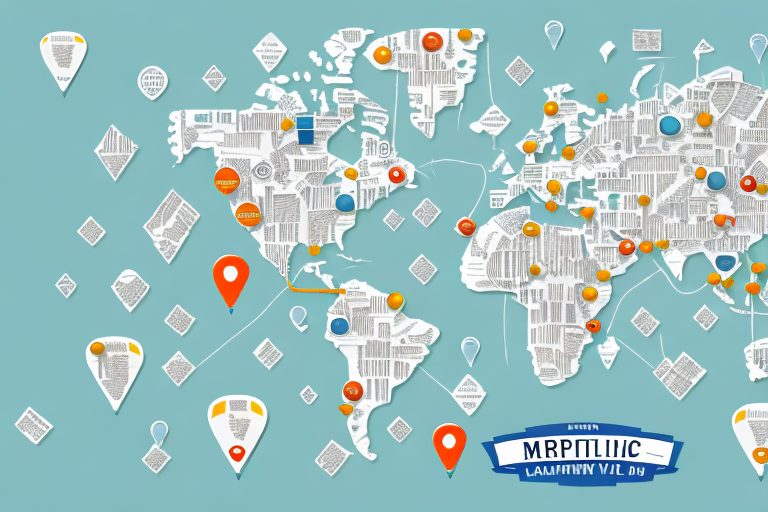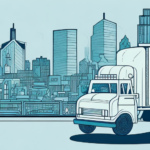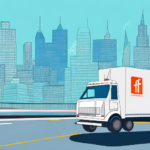Importance of Last Mile Delivery for E-commerce
Last mile delivery is the final and most crucial step in the e-commerce supply chain. It directly impacts customer experience and satisfaction, making it a vital component for any online business's success.
Impact on Customer Satisfaction
Customers today expect fast, reliable, and flexible delivery options. According to a 2023 report by ShipScience, 78% of consumers cite delivery speed as a key factor in their purchasing decisions. Efficient last mile delivery meets these expectations, fostering customer loyalty and encouraging repeat business.
Competitive Advantage
Offering unique delivery options, such as same-day delivery or scheduled delivery times, can differentiate your business from competitors. Implementing innovative delivery solutions not only enhances the customer experience but also positions your brand as a leader in the e-commerce market.
Choosing the Right Last Mile Delivery Company
Selecting an appropriate last mile delivery provider is critical for ensuring smooth operations and high levels of customer satisfaction.
Factors to Consider
- Proximity to your business and customer locations
- Delivery speed and reliability
- Flexibility in delivery options
- Real-time tracking capabilities
- Cost-effectiveness of services
Environmental Considerations
With growing environmental awareness, it's essential to choose a delivery company that prioritizes sustainability. Providers using electric or hybrid vehicles can help reduce your business’s carbon footprint and appeal to eco-conscious customers.
Evaluating Providers
Assess potential providers based on their delivery success rate, customer service, and customer reviews. Additionally, ensure they offer the specific services your business requires, such as white-glove delivery or real-time tracking.
Types of Last Mile Delivery Services
Understanding the various last mile delivery options available can help you choose the best fit for your business needs.
Same-Day and Next-Day Delivery
Same-day delivery ensures that products reach customers on the day of purchase, while next-day delivery guarantees arrival within 24 hours. Both options cater to the increasing demand for rapid delivery, especially among urban consumers.
Scheduled and White-Glove Delivery
Scheduled delivery allows customers to choose a specific delivery time, enhancing convenience. White-glove delivery includes additional services like assembly or installation, ideal for larger or more complex items.
Custom Solutions and Tracking
Many providers offer tailored solutions to meet unique business needs, including real-time tracking and delivery notifications. These features provide customers with transparency and peace of mind throughout the delivery process.
Negotiating and Contracting with Providers
Effective negotiation and clear contract terms are essential for establishing a beneficial partnership with your last mile delivery provider.
Negotiating Rates
Understand the provider's pricing structure and leverage your shipment volume to negotiate better rates. Committing to long-term contracts or agreeing to peak season volumes can also secure discounts.
Contract Terms
- Length of the contract and termination clauses
- Service level agreements (SLAs)
- Insurance and liability coverage
- Clear pricing and fee structures
- Defined responsibilities for both parties
Outsourcing Last Mile Delivery
Outsourcing your last mile delivery can streamline operations, reduce overhead costs, and enhance service quality.
Benefits
Partnering with a third-party provider allows you to focus on core business activities while leveraging their logistics expertise. It also provides the flexibility to scale delivery operations according to business growth.
Scalability and Customer Satisfaction
Outsourcing ensures that your delivery capacity can adjust to seasonal spikes and varying demand levels, maintaining high customer satisfaction even during peak periods.
Challenges and Innovations in Last Mile Delivery
The last mile delivery sector faces several challenges but is also benefiting from significant technological innovations.
Common Challenges
- Traffic congestion and urban delivery constraints
- Rising transportation costs
- Meeting diverse customer expectations
- Handling last-minute order changes
Addressing these challenges requires investment in advanced route planning and hiring trained personnel to maintain service quality.
Technological Innovations
Innovations such as drones, delivery robots, and autonomous vehicles are transforming the last mile delivery landscape. These technologies aim to enhance efficiency, reduce delivery times, and lower operational costs.
Future Trends
Future developments will likely focus on sustainability and automation. The integration of electric-powered delivery vehicles and further advancements in autonomous delivery solutions will drive the industry towards a more sustainable and efficient future.
Building Partnerships and Case Studies
Establishing strong partnerships with delivery providers and learning from successful case studies can significantly enhance your last mile delivery strategy.
Strong Partnerships
Fostering open communication and trust with your delivery provider ensures alignment of goals and continuous improvement. Regular performance reviews and feedback are essential for maintaining a productive partnership.
Successful Case Studies
Examining e-commerce businesses that have effectively implemented last mile delivery strategies can provide valuable insights. For instance, companies utilizing advanced tracking systems have reported increased customer satisfaction and repeat purchases.
The Future of Last Mile Delivery: Predictions and Trends
The future of last mile delivery is poised for significant transformation driven by technological advancements and evolving consumer expectations.
As e-commerce continues to grow, businesses must adapt by integrating automation and sustainability into their delivery models. Emphasizing eco-friendly practices and leveraging emerging technologies will be crucial for staying competitive and meeting customer demands.
For more insights and updates on last mile delivery trends, visit ShipScience.




















